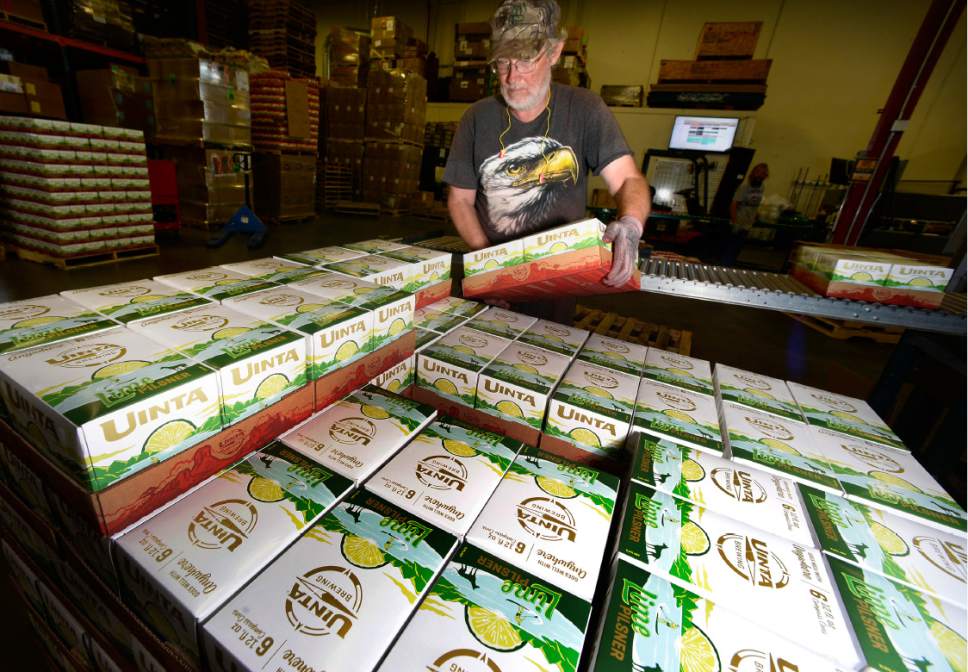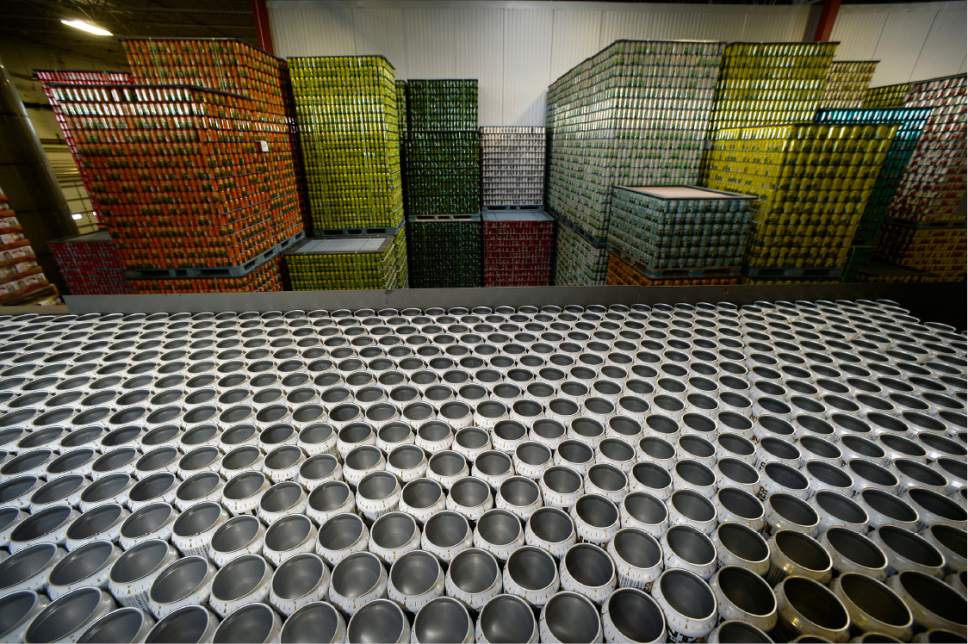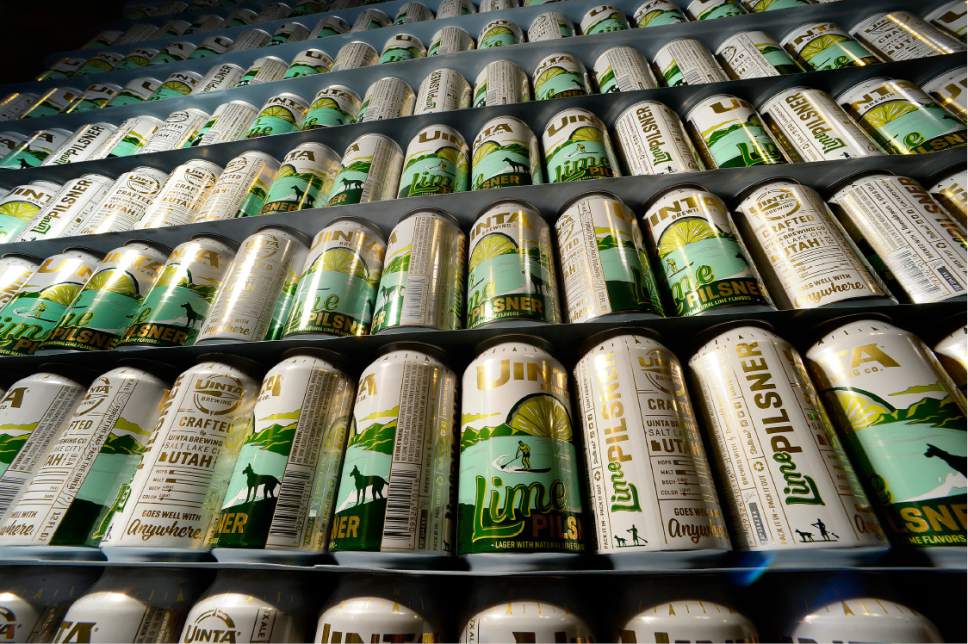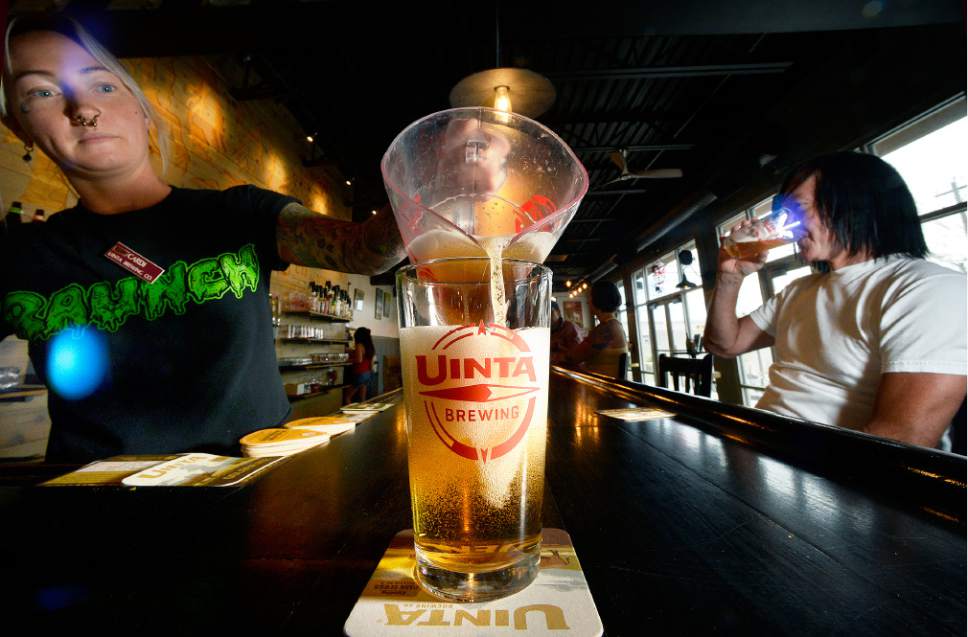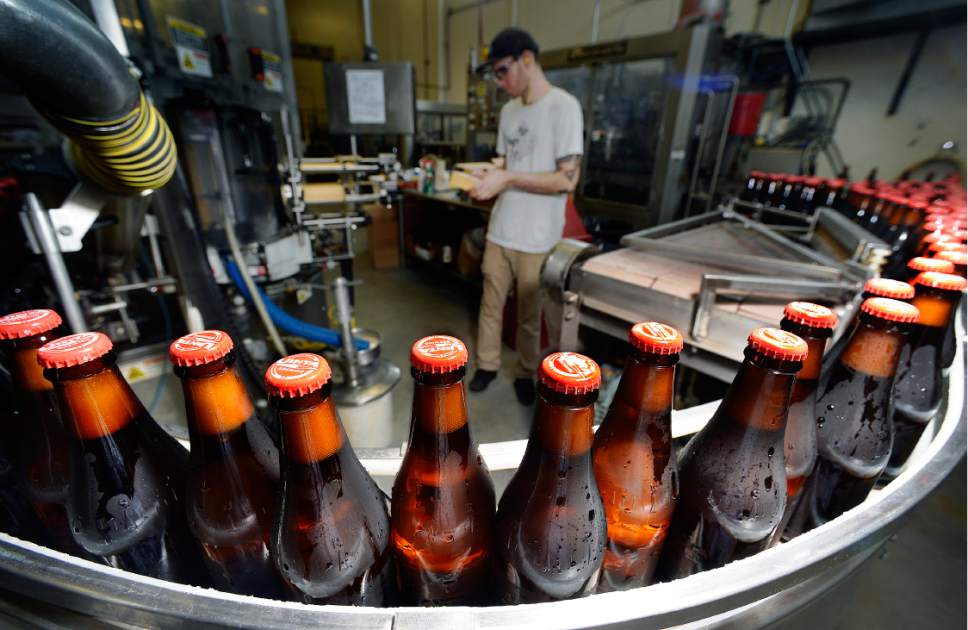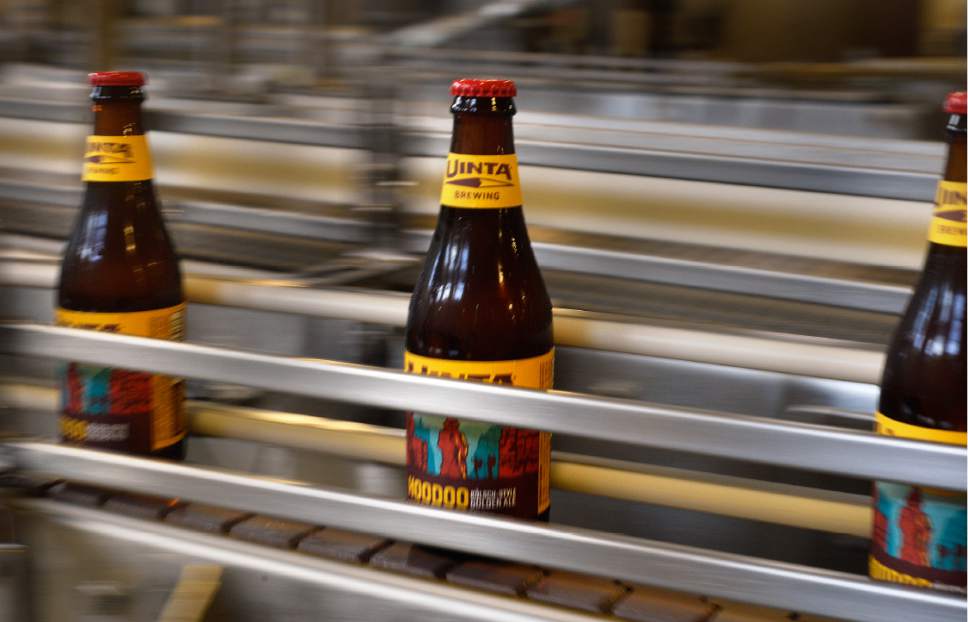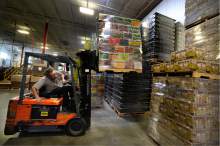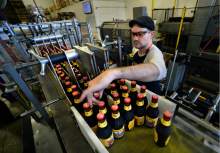This is an archived article that was published on sltrib.com in 2017, and information in the article may be outdated. It is provided only for personal research purposes and may not be reprinted.
Two large national brewing companies have answered the most pressing question in Utah's beer drinking culture: Yes, the 3.2 beer selection will dwindle when Oklahoma, Colorado and Kansas start allowing stronger beer in grocery stores.
"We will not be able to produce certain 3.2 beer brands and package configurations as demand declines due to the actions taken in Oklahoma, Colorado and Kansas," Anson Frericks , regional vice president for Anheuser-Busch, told The Salt Lake Tribune in an email. "Therefore, it will not be feasible to offer the full portfolio of beers that we currently offer to Utah consumers."
Frericks said it's too early to say what brands or products might go away. "We are looking into it now."
Marty Maloney, media relations manager with MillerCoors, had a similar response. "Certainly as these states enact their new laws, it will affect beer selection and availability of various packages across the retail marketplace," he said.
For months, the Utah beer and liquor industry has been speculating what would happen during the next two years when Utah and Minnesota become the only states to require weaker beer in grocery stores.
With these two confirmations, Utah now has three choices:
• Keep the current 3.2 beer law in place and hope small and midsize breweries can pick up the slack.
• Make a slight bump in the permissible alcohol level for grocery store beer from 3.2 percent to 4.8 percent.
• Allow beer of any strength — not just 3.2 — to be sold in Utah grocery and convenience stores as well as on tap at bars and restaurants.
Utah lawmakers have time to debate the options. Oklahoma's new law doesn't take effect until October 2018. Changes in Colorado and Kansas begin in 2019.
Utah brewers already are making a case for option 3.
"Why not give us the chance to sell beer at any level and let the consumer decide?" said Steve Mills, the CEO of Uinta Brewing Co., the state's largest brewer. "It would serve the public better and give Utah breweries a better chance of being competitive."
He used Uinta's most popular beer, Hop Nosh IPA, as a case in point. The India Pale Ale, with flavors of lime, grapefruit and a touch of bitter hops, "represents one-fifth of our total business, yet it is only 6 percent of our business in Utah." Because the brew contains 7.3 percent alcohol by volume (ABV), he said, "we can't sell our most popular beer in Utah grocery and convenience stores."
Grocery and convenience stores in Utah can sell only beer that is 3.2 percent alcohol by weight (or 4 percent ABV). Anything with a higher alcohol content must be sold at the state-owned liquor stores. Beer on tap at bars and restaurants also must be 3.2 percent.
State statistics show that the state-run liquor stores sell only about 6 percent — or 2 million gallons — of all the beer in the state. The majority of beer — more than 94 percent or about 32.4 million gallons — is sold annually in grocery and convenience stores.
Beer wholesalers and retailers have been pushing for a slight increase in the permissible alcohol content from 3.2 percent by weight to 4.8 percent.
The change would "capture the lion's share of the production-line beer that is out there, and consumers would not see some of these negative effects," David Davis, president and chief legal officer at Utah Food Industry Association/Utah Retail Merchants Association, told lawmakers earlier this month.
Brewers say that a small change would hurt Utah's booming beer-making industry.
"We are against a small increase because it favors large commercial breweries and comes at the expense of local craft breweries," said Peter Erickson, communications director for the Utah Brewers Guild and co-founder Epic Brewing Co.
He said there are few craft beers made in Utah that fall between 4 percent and 4.8 percent ABV, so "a bump that small does not benefit the little guy. It benefits the guy that is already huge."
Keeping the status quo is preferable to a small bump, Erickson said.
"Local craft breweries would do their best to fill the void as would regional and national craft breweries," he said. "Anything left will be gobbled up by smaller national brands like Pabst. Consumer choice will most likely increase, not decrease, and distributors and grocery stores will still have plenty of beer to sell."
But allowing higher alcohol beer in grocery stores "raises major red flags" for those involved in alcohol prevention, said Craig PoVey, a program administrator with the Utah Division of Substance Abuse and Mental Health.
"We know that availability leads to overconsumption by adults and to underage drinking," he said. "The more alcohol going into the system, the more likely you will become dependent."
This is particularly true for teens whose brains are still developing, he said. Teens are still going to drink a whole container of beer — whether its 3.2 percent or 4.8 percent alcohol. "And way too often, they are drinking more than one container," he said.


